One of the three kingdoms of eukaryotes (superdomain, which includes organisms with a separate nucleus in the cells) - fungi. They are on the border between plants and animals. Today there are about 100 thousand species, most of which are microscopic fungi. This article tells about the features of their structure and reproduction, the importance in nature and human economic activity.
Almost plants and not quite animals
Kingdom Mycota includes both unicellular and multicellular organisms with a very peculiar organization. They have similarities with both animals and plants, namely:
- They have a cell wall, but not from cellulose, like in plants, but from chitin, like in animals.
- In the cells of fungi there are vacuoles filled with cell sap. But not starch (in plants), but glycogen (in animals).
- Mushrooms are not capable of active movement. They lead an attached lifestyle.
- Mushrooms- heterotrophs, they do not have chlorophyll and they are not capable of photosynthesis. Therefore, they feed on ready-made organic substances of dead organisms (saprotrophs) or living organisms (parasites).
- Unlike both animals and plants, fungi cells are practically not differentiated into tissues, and tissues into organs.
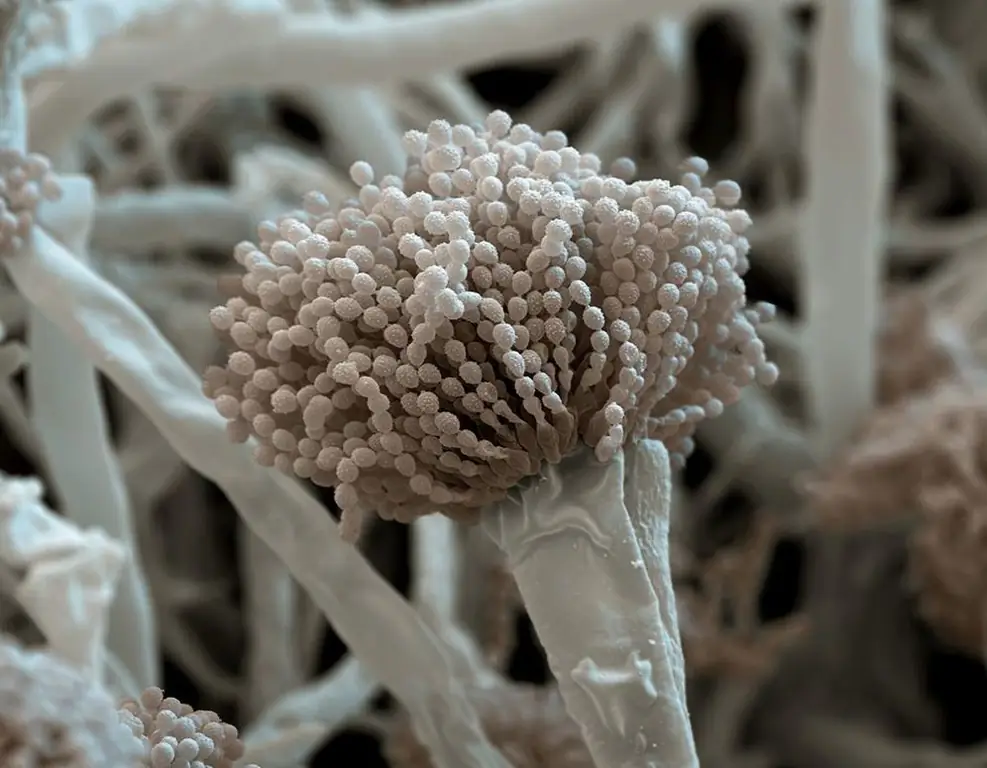
Mysterious creatures of the devil
This is exactly what mushrooms were considered in the Middle Ages. One of the French naturalists, Venyan, wrote in 1727 that mushrooms exist in order to disrupt the harmony of all living things.
The question of the origin of mushrooms remains open today. Although back in the 18th century, the outstanding botanist Carl Linnaeus attributed these organisms to the hotel kingdom. Mushrooms, which originated at the dawn of life on the planet (about a billion years ago), are waiting for clues to their origin from biologists, biochemists, geneticists and taxonomists.
Systematics of mushrooms
All mushrooms are divided into 4 classes (lower fungi - Oomycetes and Zygomycetes, higher - Ascomycetes and Basidomycetes). The main criterion for separation is the presence or absence of flagella in gametes and the type of sexual reproduction. In addition, in lower fungi, the mycelium looks like one multinucleated cell, while in higher fungi, the mycelium has intercellular septa.
Most mushrooms are microscopic in size. Most often, their mycelium is not visible without magnification or is visible in the form of thin threads. The presence of microscopic fungi is indicated by the results of their vital activity - the destruction of plant, animal tissues or materials. At alla small group of mushrooms can form fruiting bodies - dense clusters of mycelium.
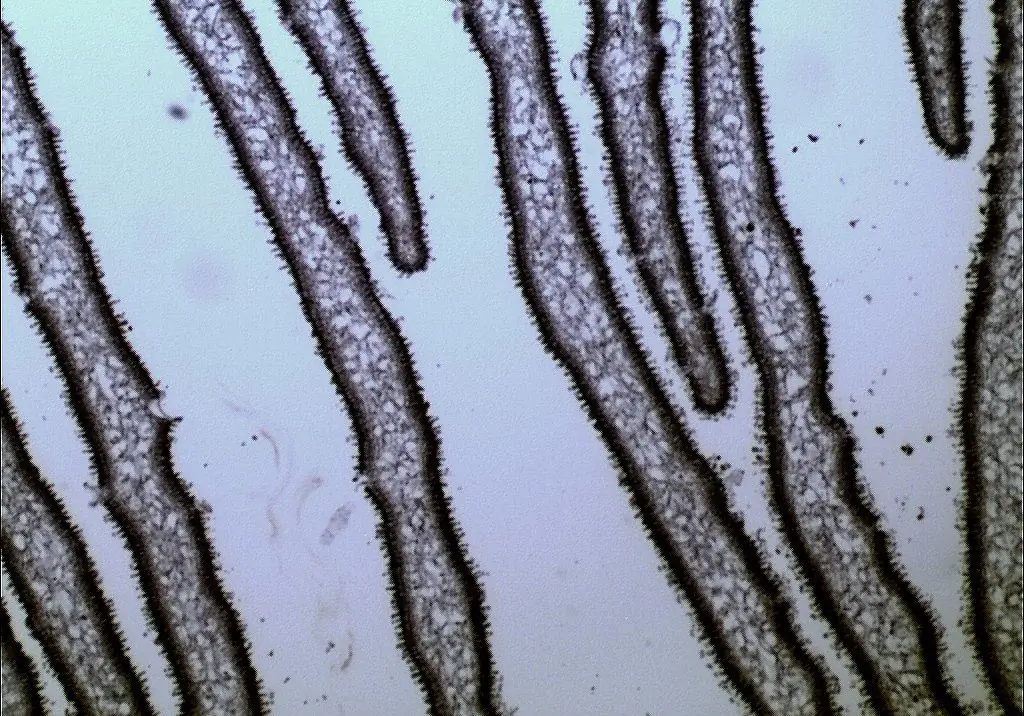
The structure of microscopic fungi
Micromycetes do not form fruiting bodies, they can be unicellular and multicellular. Accordingly, the morphology of microscopic fungi is quite diverse.
The body of multicellular fungi is formed by sequentially placed cells that make up hyphae (threads) with a thickness of 0.15 to 1 micron. The hyphae grow apically (apically) and may have a branched structure. The whole set of fungal hyphae is called mycelium or mycelium.
Mushroom hyphae grow very fast. In some specimens, the mycelium can grow tens of meters in just a day.
Single-celled fungi (for example, Yeast) are one cell, do not form mycelium. It has a nucleus, vacuoles with organic and inorganic substances, mitochondria.
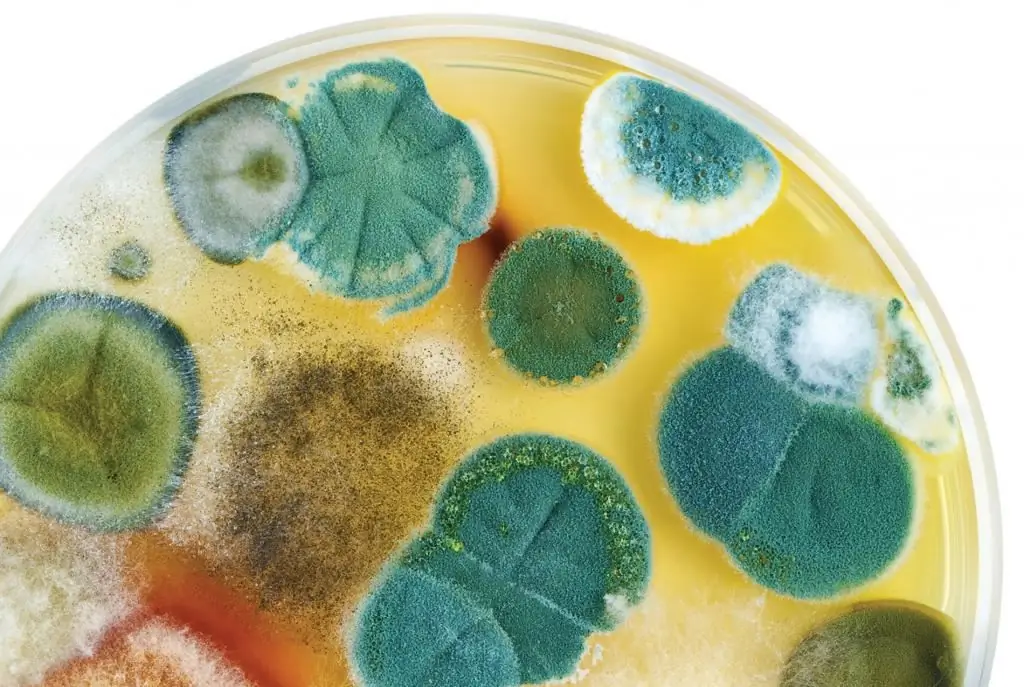
Features of nutrition and life
The microbiology of microscopic fungi has its own characteristics. Hyphae cells over the cytoplasmic membrane contain a sheath, which consists of the polysaccharide chitin. The cytoplasm of the cell contains the nucleus (one or more) and organelles.
Mushrooms absorb nutrients through the entire surface of the mycelium, which penetrates the entire substrate (substrate mycelium) or is located on its surface (surface mycelium).
Food for the fungus are organic compounds - sugar, polyhydric alcohols, fats, proteins. At the same time, a rich and diverse enzymaticthe device allows you to fully use the entire substrate to build the body of microscopic fungi.
Microbiology distinguishes fungi that are characterized by saprotrophic (feed on dead organic matter) and parasitic (feed on living organic matter) types of nutrition. In addition, fungi can enter into symbiotic relationships with plants. So, hyphae of fungi and algae form symbiotic organisms - lichens.
Microscopic pathogenic fungi can grow in animals and plants and cause diseases called mycoses.
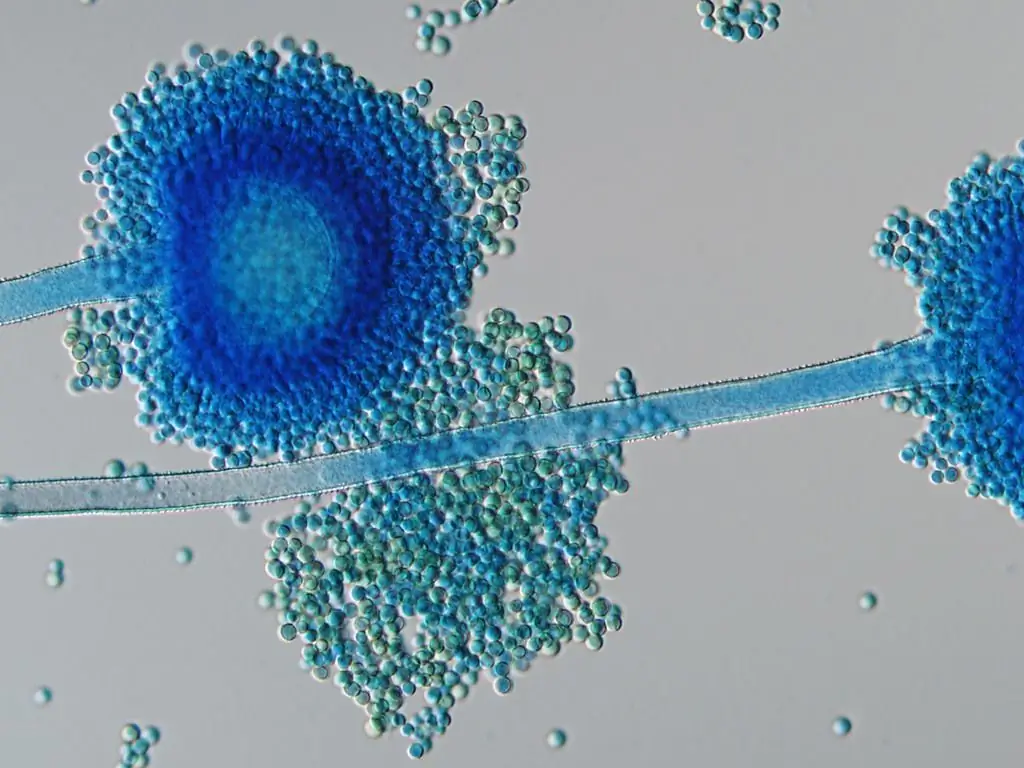
Features of reproduction
Micromycetes are characterized by three types of reproduction: vegetative, asexual and sexual.
Vegetative propagation of microscopic fungi is carried out by particles of mycelium. For example, a piece of hypha gives rise to a new mycelium of the fungus.
Asexual reproduction is carried out with the help of spores - microscopic rudiments that are formed in sporangia (specialized parts of the mycelium). The main function of spores is survival in adverse conditions. And for a number of microscopic fungi that lead a parasitic lifestyle, spores serve to infect the host organism.
The forms of the sexual process in fungi are diverse and are divided into three groups:
- Gametogamy is a type of sexual reproduction with the formation of germ cells (gametes).
- Somatogamy is the fusion of vegetative cells of mycelium or unicellular fungi.
- Gametangiogamy is a type of sexual reproduction when structures in which gametes have not yetdifferentiated.
At the fusion of gametes (fertilization), fungi form a zygote with one or more nuclei. Most often, the zygote does not germinate immediately, but after a dormant period. So mushrooms can also survive adverse environmental conditions.
Micromycetes in nature
The importance of microscopic fungi in nature is enormous. They participate in the cycle of substances, decomposing organic remains along with bacteria.
Soil fungi are involved in the formation of the fertile layer. In symbiosis with algae in lichens, they are the first to colonize poor soils and take an active part in the destruction of rocks.
It is worth noting such a phenomenon as mycorrhiza - the cells of a microscopic fungus enter into a symbiotic relationship with plants. At the same time, plants provide the fungus with organic nutrients, and the fungus produces vitamins and nitrogen-containing substances necessary for the growth and development of plants.
Microscopic fungi are present in all biocenoses and perform an important ecological function. They are an important detritus link in food chains and regulators of the abundance of other organisms. In many biogeocenoses, the proportion of fungal biomass from the biomass of all microorganisms is up to 90% and is comparable to the biomass of the roots of higher plants.
It is impossible not to note the role of microscopic pathogenic fungi in nature. They regulate the number of other organisms and participate in the changes of biocenoses on the planet.

Micromycetes and man
In their activities, a person has been usingsome inferior mushrooms.
Microscopic fungi, white mold and aspergillus, all types of yeast are used in the bakery, dairy, brewing, wine and alcohol industries.
In the pharmaceutical industry, micromycetes are widely used to produce antibiotics, vitamins, hormones, enzymes and physiologically active substances.
Many micromycetes destroy paper and cellulose products, spoil oils and petroleum products, damage optics and works of art.
Molds and yeasts are the main culprits of food spoilage. They are also wood-destroying - damaging wood.
Microscopic pathogenic fungi cause diseases in crops, domestic animals and humans. Due to their ability to produce toxins, mushrooms often cause poisoning.
Mycotoxins
Hazardous biological substances synthesized by microscopic fungi are metabolites (waste products) with a wide variety of chemical structures and effects on the human body.
Today, more than 250 species of micromycetes are known. They synthesize about 100 toxins and allergens. Microscopic fungi of different species can synthesize the same toxin. And the poisons themselves most often have a cumulative (cumulative) effect on the human body, namely:
- Yaflatoxins - have a hepatotoxic, mutagenic, immunosuppressive effect on the human body.
- Trichothecenes are neurotoxins that depress the immune system,cause various dermatitis.
- Ochratoxins - primarily affect the tubules of the nephrons of the kidneys.
- Patulins are neurotoxins and mutagens.
In case of poisoning with micromycete toxins, the stomach should be washed first.
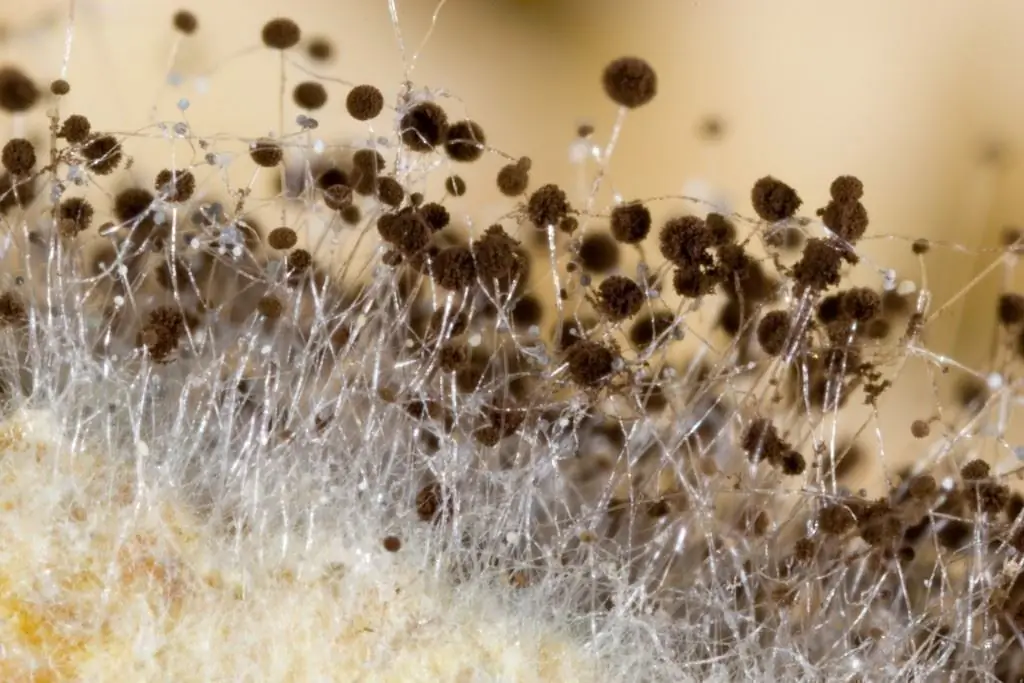
Parasitic micromycetes
This group includes a huge number of fungi that cause various pathologies in people, plants, animals, fish. Pathologies of the skin are called dermatomycosis, and pathologies of organs are called mycoses.
The most common human diseases caused by parasitic fungi are:
- Dermatophytosis (scab or ringworm), which manifests itself as red, itchy patches on the skin and destruction of hair follicles.
- Candidiasis (thrush) is caused by representatives of the genus Candida, which are facultatively pathogenic and are part of the normal microflora of the oral cavity, genital tract and large intestine.
- Onychomycosis (nail fungus) is caused by various fungi that affect the subungual space.
- Sporotrichosis - parasitic fungi destroy subcutaneous tissue, mucous membranes, internal organs.
- Black and white piedra is a disease that affects the hair follicles of the mustache and eyebrows. The causative agent is a fungus of the genus Piedraia.
And this is not a complete list of diseases caused by micromycetes. At the same time, the ways in which the fungus enters the body are diverse (air, water, contacts), and their resistance to various media is quite high.
The most famous micromycetes
Microscopic fungi include Mucor, Penicillium and Yeast.
Mushrooms of the genus Mucor are 60 species of mushrooms that we call white mold. They form colonies of white and gray color, which turn black as the spores mature. The mycelium of the mucor is unicellular, the composition of the cell wall includes the nitrogen-containing carbohydrate chitosan, which has allergenic features. Among them there are parasites, but there are also those that are actively used in the manufacture of antibiotics. Mushroom Mukor Chinese - the basis of the sourdough "ragi" based on soy and cereals.
Penicillium (Penicillium) is a genus of microscopic fungi that are common everywhere - in soil, water, seas, air, rooms, on all surfaces. Forms greenish colonies. Penicillium golden or green brush mold is the most common representative of the genus and the source of penicillin. These mushrooms have branching multicellular mycelium.

Yeast is a group of diverse unicellular fungi from different classes (1,500 species from the class Ascomycetes and Basidomycetes). These fungi do not form mycelium, and their cells are up to 40 microns in size. They are combined into a general group for the peculiarities of metabolism - they all receive energy during fermentation (a redox process, as a result of which carbohydrates decompose, and alcohols are the breakdown products). Bread-making, winemaking, brewing and kvass brewing is not a complete list of industries where a person uses these mushrooms. And at the same time, this is one of the main factors of food spoilage, and someparasites that cause diseases in humans (candidiasis, cryptococcosis, pityriasis, folliculitis, seborrheic dermatitis).
Hunting tendencies
Strange as it may seem, there are active "predators" among the microscopic fungi.
Thus, the fungus Arthrobotrys oligospora creates a network with its hyphae, the walls of which are covered with a sticky substance. The victims of the fungus are roundworms (nematodes) living in the soil. A worm stuck to the hyphae is deprived of the opportunity to free itself, and the hyphae quickly grow into its body. The nematode becomes food and after 24 hours only the shell remains.
Another fungus Dactylaria Candida forms a lasso-like trapping ring from hyphae. The nematode enters it and the ring closes. The epilogue of the drama is the same as the previous version.
These features of soil micromycetes have long been studied by biologists for use in the form of biological protection of crops.
Environmental bioindicators
Recent studies by biologists have proven that microscopic fungi have the ability to change their numbers and composition depending on the state of their habitat.
Normally, the number of soil micromycetes is about 10 tons per hectare, and at the same time it is diverse. In the study of soils contaminated with oil and its products, ecologists have found that at high doses of toxins, the number and species composition of soil microscopic fungi changes dramatically. In this case, the species diversity sharply decreases, micromycetes with rapid growth begin to predominate, which are not typical in such soils. Besides,many of these fungi are phytopathogenic - they produce biologically active substances that disrupt intracellular processes in plant organisms, which leads to inhibition of their vital activity and death.
Thus, the numbers and species composition of microscopic fungi can be reliable indicators of soil contamination with oil and its derivatives.
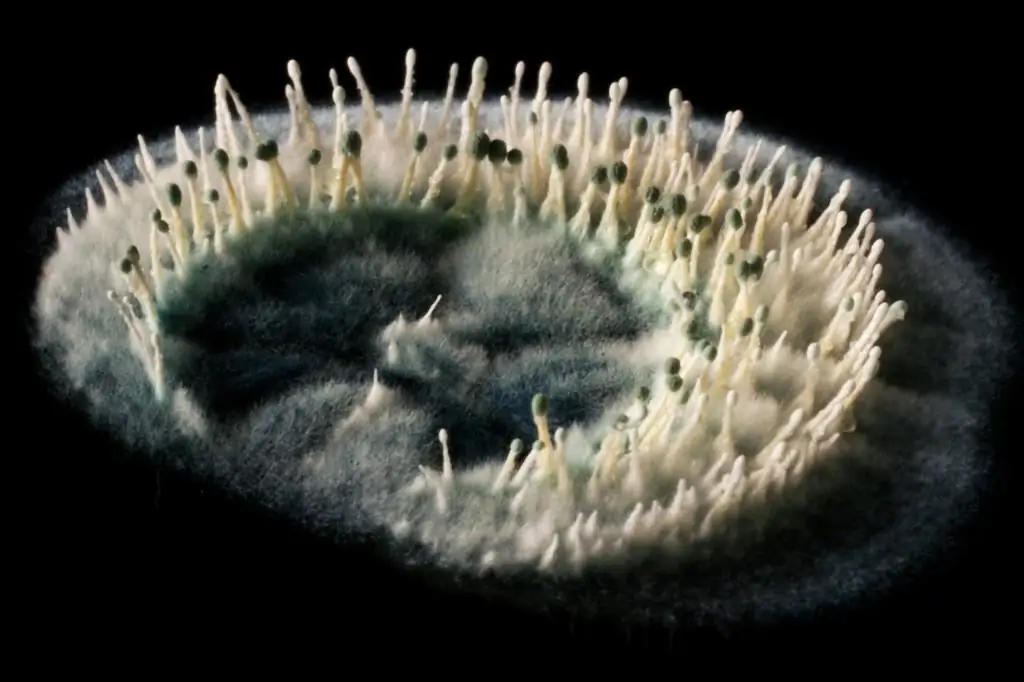
Summarize
For thousands of years, the removal of fat from the skin was considered the most time-consuming process in the leather industry. The process was long and messy, using pigeon droppings and dog excrement. Today, proteinase, an enzyme derived from Aspergillus mushrooms, has shortened this process to 24 hours and also made skin softer and easier to color.
This is just one example of how beneficial microscopic organisms can be. Despite the development of biology, many features of the vital activity of these organisms still remain a mystery.
Every year taxonomists describe more than a thousand new species of microscopic fungi. The role of soil micromycetes remains the most unexplored branch of both bioecology and biogeography. And this is due primarily to the difficulties of observing such organisms in their natural habitat.
A new section in mycology - the doctrine of fungal toxins - already today gives us hope of victory over cancer. For example, Chaga fungus toxin greatly increases the body's resistance to the development of cancer cells. And psilocycin gives good prerequisites fortreatment of nervous disorders. Even the studied penicillium continues to amaze microbiologists - most recently, scientists managed to isolate from it substances that are chemically similar to the hormones liberins.
Mushrooms will not stand aside in the development of new biological means of protecting crops of agricultural plants, and in the development of new "green" ways of waste disposal.






